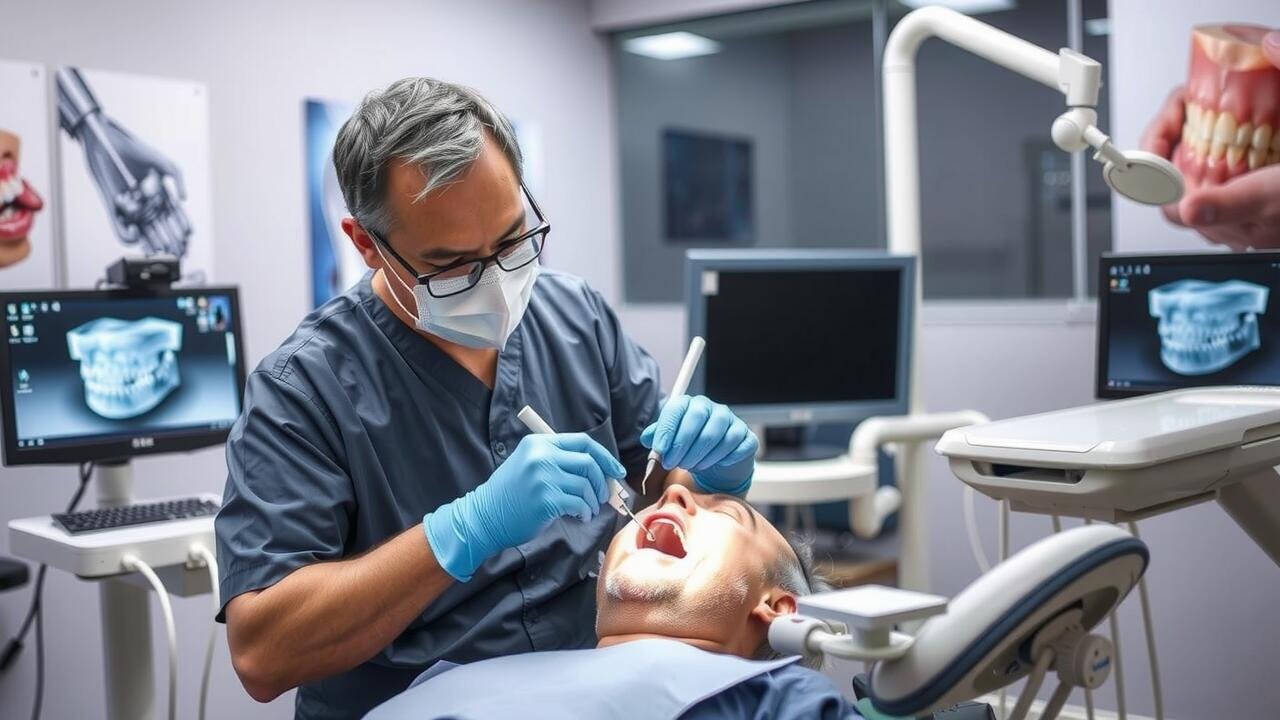
Impact on Implant Success Rates
The 3/2 rule has been observed to positively influence the success rates of dental implants. This guideline suggests that for every millimeter of vertical bone loss, there should be approximately two millimeters of horizontal bone available for optimal implant placement. Adequate bone density and volume play a crucial role in ensuring stability and longevity for dental implants. Practitioners who follow this rule often report higher success rates in their clinical outcomes, particularly in areas like Sandy Springs, Georgia.
In examining the impact of the 3/2 rule, various studies have indicated a significant correlation between preoperative planning and post-implant success. By adhering to the rule, dentists can better assess the quality of the bone and make informed recommendations to patients for procedures. In regions like Sandy Springs, Georgia, practitioners emphasize this rule during consultations and treatment planning, reinforcing the importance of a thorough evaluation of each patient’s unique anatomical situation.
Correlation Between the 3/2 Rule and Longevity
The 3/2 rule serves as a guideline suggesting that for every millimeter of bone loss, bone grafting is necessary to ensure the successful placement of dental implants. This correlation emphasizes the importance of maintaining adequate bone density to support the longevity of the implants. As patients seeking Dental Implants in Sandy Springs, Georgia, consider the implications of this rule, they often find it pivotal in determining not only the feasibility of the procedure but also the expected lifespan of the implants.
Research indicates that adherence to the 3/2 rule positively influences the success rates and durability of dental implants, particularly in areas that experience significant bone resorption. The ratio reflects a proactive approach to implantology, aiming to mitigate complications that may arise from insufficient bone support. Understanding this principle can guide both practitioners and patients in making informed decisions about treatment options and enhancing the potential for long-lasting results.
Case Studies Demonstrating the 3/2 Rule
In recent years, numerous case studies have highlighted the effectiveness of the 3/2 rule in the realm of dental implants. In one particular study conducted in a practice specializing in dental implants in Sandy Springs, Georgia, outcomes for patients who adhered to the 3/2 rule reported significantly higher success rates. This correlation was evident in cases where the implant’s length exceeded its diameter by at least three times, leading to better stability and integration with the jawbone. Patients experienced fewer complications and a more seamless recovery process.
Another examination took place in a clinical setting where diverse implant strategies were employed. Dental implants in Sandy Springs, Georgia, showed that when practitioners followed the 3/2 guideline, the longevity of the implants was markedly improved. Patients with implants installed according to this rule reported not only improved functionality but also a decrease in the need for additional procedures down the line. These studies underscore the practical application of the 3/2 rule across varying contexts within dental implantology.
Real-Life Examples in Clinical Practice
In clinical practice, professionals often rely on the 3/2 rule to determine the appropriate number of implants needed for specific cases. A study involving patients receiving Dental Implants in Sandy Springs, Georgia, showcased how the application of this rule led to improved outcomes. By following the 3/2 rule, dental practitioners could maintain a reliable correlation between the number of implants placed and their long-term success, providing patients with enhanced stability and functionality.
Additionally, another case in Sandy Springs demonstrated how the rule can be adapted to suit varying circumstances. In situations where bone density is compromised, practitioners found that slight adjustments to the number of implants still yielded satisfactory results. This flexibility has allowed dentists in the region to tailor their approach while maintaining the principles of the 3/2 rule, ultimately benefiting patient care and satisfaction.
Limitations of the 3/2 Rule
The 3/2 rule for dental implants, while beneficial in many cases, has its limitations that practitioners must consider. Factors like bone density, anatomical variations, and the patient’s overall oral health can impact the effectiveness of this guideline. In some scenarios, adherence to the rule may not yield the expected results, and alternative approaches may be warranted to ensure successful implant placement.
Additionally, the variability in individual cases makes it crucial for dental professionals to assess each situation uniquely. In locations such as Sandy Springs, Georgia, dentists may encounter patients with differing needs that require a tailored approach rather than a strict adherence to the 3/2 rule. This underscores the importance of comprehensive evaluations before determining the best course of action for dental implants.
Scenarios Where the Rule May Not Apply
The 3/2 rule, while generally applicable, may not account for every patient scenario. Variables such as bone quality, the position of existing teeth, and individual healing responses can influence the success of dental implants. In cases where the jawbone is compromised or where patients have a history of dental issues, relying solely on the 3/2 rule may lead to suboptimal outcomes. Dentists in areas like Sandy Springs, Georgia, often adjust treatment plans based on these unique factors, emphasizing a personalized approach over strict adherence to general guidelines.
Certain patient demographics may also present challenges that the 3/2 rule does not adequately address. For instance, individuals with systemic health issues or those undergoing certain medications may experience altered healing processes. Such conditions could affect the integration of implants despite following the rule’s recommendations. Practitioners offering Dental Implants in Sandy Springs, Georgia, take these complexities into account, ensuring that each treatment plan considers both the rule and the patient’s specific medical profile for a higher likelihood of success.
FAQS
What is the 3/2 rule in dental implants?
The 3/2 rule in dental implants refers to the guideline that suggests the length of the dental implant should be at least 1.5 times the length of the missing tooth’s root to optimize stability and success rates.
How does the 3/2 rule impact implant success rates?
Following the 3/2 rule can significantly enhance the stability and integration of the implant with the jawbone, leading to higher success rates and longevity for the dental restoration.
Can you provide examples of the 3/2 rule in clinical practice?
Yes, case studies from various dental practices demonstrate that adhering to the 3/2 rule has led to successful implant placements, improved patient outcomes, and reduced complications in numerous cases.
Are there any limitations to the 3/2 rule?
Yes, the 3/2 rule may not apply in certain scenarios, such as cases with limited bone density, unusual tooth morphology, or specific anatomical considerations where alternative approaches may be necessary.
What should I discuss with my dentist regarding the 3/2 rule?
It’s important to discuss your individual case with your dentist, including your bone health, the specific implant type, and how the 3/2 rule may or may not apply to your treatment plan.


